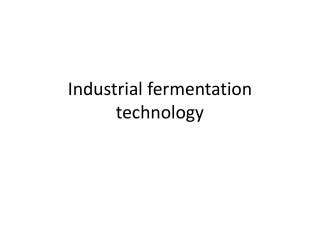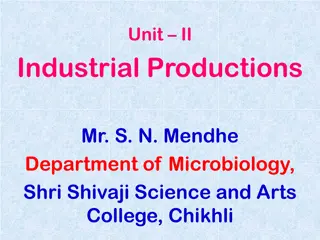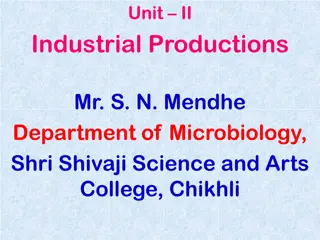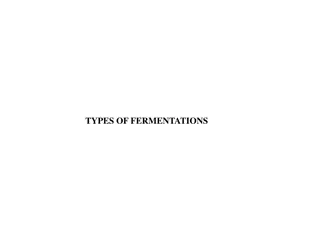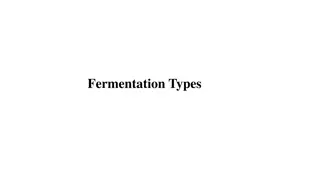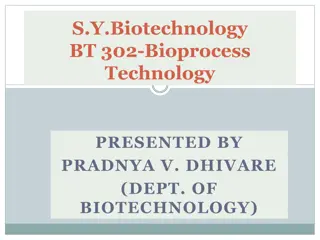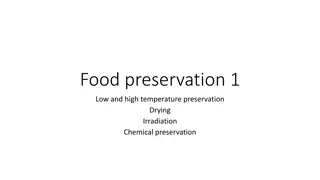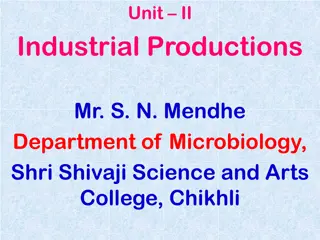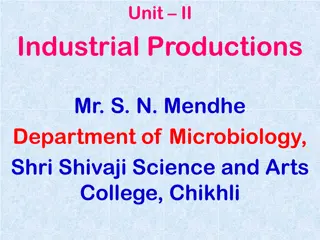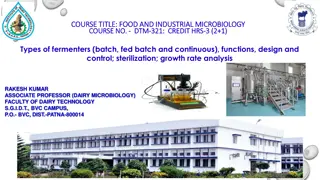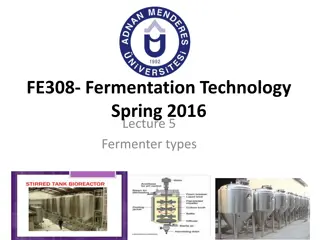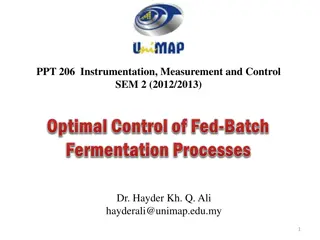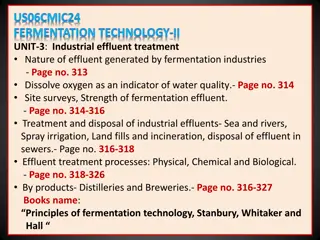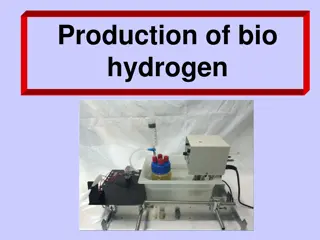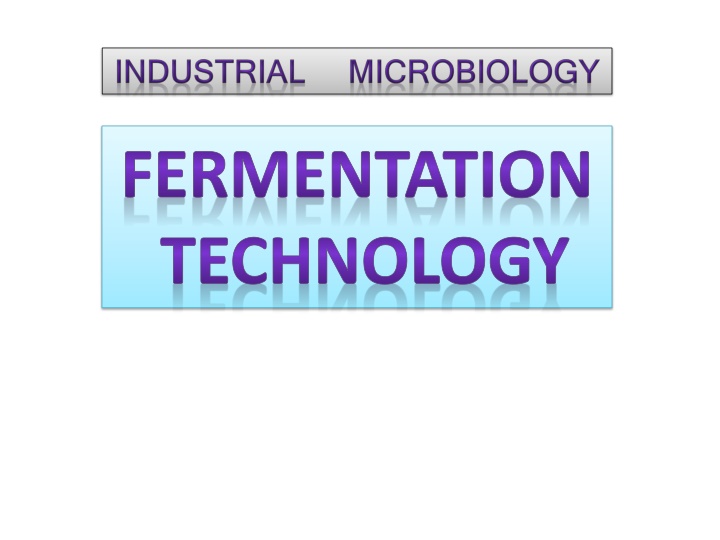
Fascinating Insights into Fermentation Technology and Industrial Applications
Explore the intriguing world of fermentation technology, where microorganisms are harnessed on an industrial scale to create valuable products and chemical transformations. Learn about the history, important products, equipment used, and techniques employed in this innovative process. Discover the advantages and disadvantages of fermentation technology as you delve into this transformative field.
Download Presentation

Please find below an Image/Link to download the presentation.
The content on the website is provided AS IS for your information and personal use only. It may not be sold, licensed, or shared on other websites without obtaining consent from the author. If you encounter any issues during the download, it is possible that the publisher has removed the file from their server.
You are allowed to download the files provided on this website for personal or commercial use, subject to the condition that they are used lawfully. All files are the property of their respective owners.
The content on the website is provided AS IS for your information and personal use only. It may not be sold, licensed, or shared on other websites without obtaining consent from the author.
E N D
Presentation Transcript
FERMENTATION TECHNOLOGY
Introduction Fermentation Products Industrial scale Contents Types Advantages Disadvantages Summary
INTRODUCTION FERMENTATION TECHNOLOGY microorganisms, grown on a large scale, to produce valuable commercial products or to carry out important chemical transformations. FERMENTATION Pasteur s life without air , Latin word fervere, to boil
ZYMOLOGY OR ZYMURGY. Eduard Buchner 1897 Fermented no living yeast cells in the mixture 1907, Nobel Prize in Chemistry
Some important fermentation products Product Organism Use Ethanol Industrial solvents, beverages Production of explosives Food and pharmaceutical Solvents Saccharomyces cerevisiae Saccharomyces cerevisiae Lactobacillus bulgaricus Clostridium acetobutylicum Bacillus subtilis Glycerol Lactic acid Acetone and butanol -amylase Starch hydrolysis 6
INDUSTRIAL SCALE Fermentor is the basic equipment fermentation. used for contains the media to carry out fermentation, and creates environment for fermentation at large scale. http://web.ukonline.co.uk/webwise/spinneret/microbes/penici.htm)
REQUIREMENTS Pure culture: organism, quantity, physiological state Sterilised medium: for microorganism growth Seed fermenter: inoculum to initiate process Production fermenter: large model Equipment i) drawing the culture medium ii) cell separation iii) collection of cell iv) product purification v) effluent treatment.
surface (solid state) submersion techniques. microorganisms cultivated on the surface of a liquid or solid substrate. microorganisms grow in a liquid medium. (biomass, protein, antibiotics, enzymes and sewage treatment) are carried out by submersion processes. complicated and rarely used in industry. Mushroom, bread, cocoa, tempeh
BATCH FERMENTATION Sterile nutrient substrate , inoculated, grow until no more of the product is being made, "harvested" and cleaned out for another run. lag phase (adapt to their surroundings) exponential growth (grow in numbers) stationary phase (stop growing) death phase
CONTINUOUS FERMENTATION Substrate is added continuously to the fermenter, and biomass or products are continuously removed at the same rate. Under these conditions the cells remain in the logarithmic phase of growth FED-BATCH FERMENTATION Substrate increments as the fermentation progresses. started as batchwise with a small substrate concentration. Initial substrate is consumed, addition of fermentation medium
Microbial cell (Biomass) Yeast Microbial enzymes Glucose isomerase Microbial metabolites Penicillin Food products Cheese, yoghurt, vinegar Vitamins B12, riboflavin
P.F. STANBURY, A. WHITAKER AND S. J. HALL, PRINCIPLES OF FERMENTATION TECHNOLOHY
ADVANTAGES 1. Preserves and enriches food, improves digestibility, and enhances the taste and flavour of foods. 2. Potential of enhancing food safety by controlling the growth and multiplication of a number of pathogens in foods. 3. Important contribution to human nutrition, particularly in developing countries, where economic problems pose a major barrier to ensuring food safety.
3- Low energy consumption due to the mild operating conditions relatively low capital and operating costs relatively simple technologies. 4- They cause highly specific and controlled changes to foods by using enzymes. 5- Preservation and detoxification of the food. 6- Waste treatment. 7- Health related product.
DISADVANTAGES hazardous microbial contamination always exist in fermented food The uneven distribution of salt in lactic acid fermented fish products and contamination of Aspergillus flavus in traditional starter cultures for rice wine and soybean sauce result in severe food poisoning incidences Health(obesity, cancer) C.H. LEE, 1989
References Stanbury, P.F., A. Whitaker, and S. J. Hall, (2000) Principles of Fermentation Technology, 2nd ed., Butterworth Heinemann, Oxford. Shuler, M. L. and F. Kargi., (2002). Bioprocess Engineering Basic Concepts, 2nd ed., Prentice Hall, Upper Saddle River, NJ, Lee, C.H., (1989) Fish fermentation technology, Korean J. Applied Microbiology and Bioengineering, 17(6), 645-654 Daniel I. C., et al., (1979) Fermentation and Enzyme Technology, John Wiley, New York . Willey, J. M. Shrewood, L. M. (2008) Microbiology .7th ed. Mc Graw Hill.,1067-1069


